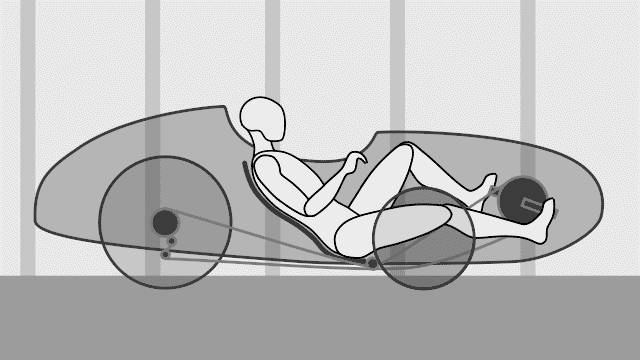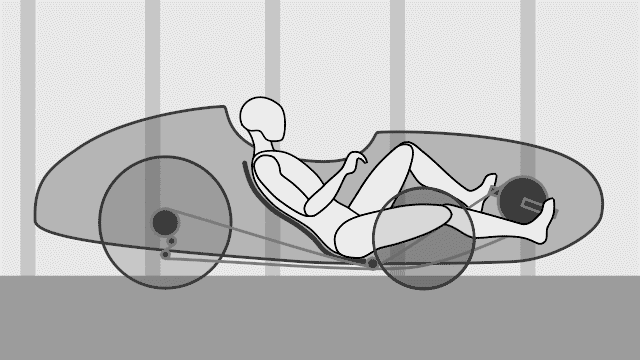I made these to illustrate the difference between shifting a Rohloff vs. conventional derailleur/cassette system in a velomobile going at speed. According to Doug Davis at Bicycle Evolution, some novice velonauts desire Rohloffs because they offer a very wide gear range, but the larger gaps between gears make them less efficient at speed. He has data about watts and gear inches and rotations per minute, but I merely tried to convey the drama of having to upshift too fast in a 60+ pound tub:

For contrast, the illustration below represents a more narrowly spaced conventional rear cassette setup, like what I have on my Mango:

Maybe we’ll talk about this, and other recumbent nerd stuff, on the next Laidback Bike Report.

‘Tis true, even standard 11-34+ type recumbent cassettes are generally less than 10% between shifts at the high end. Good illustration!
A 14% increase … takes you from 90rpm down to 78rpm, hardly a huge strain on the rider.
A good old three speed has a 33% increase.
What you’ve illustrated is a Schulmpf HSD, which would be a strain on the rider if there wasn’t gearing out the back to bridge the gap.